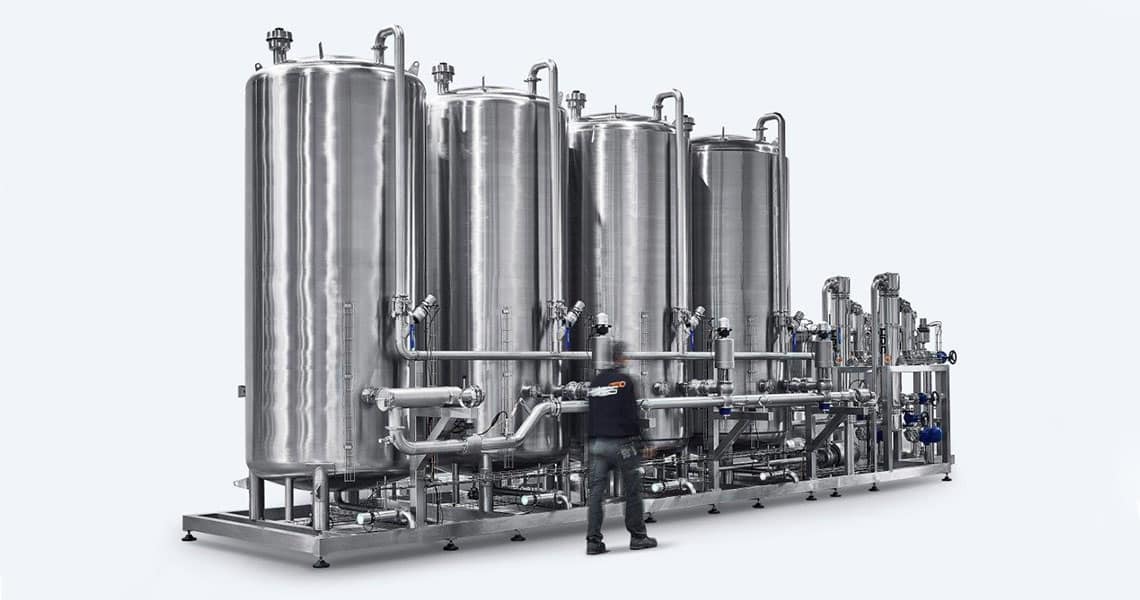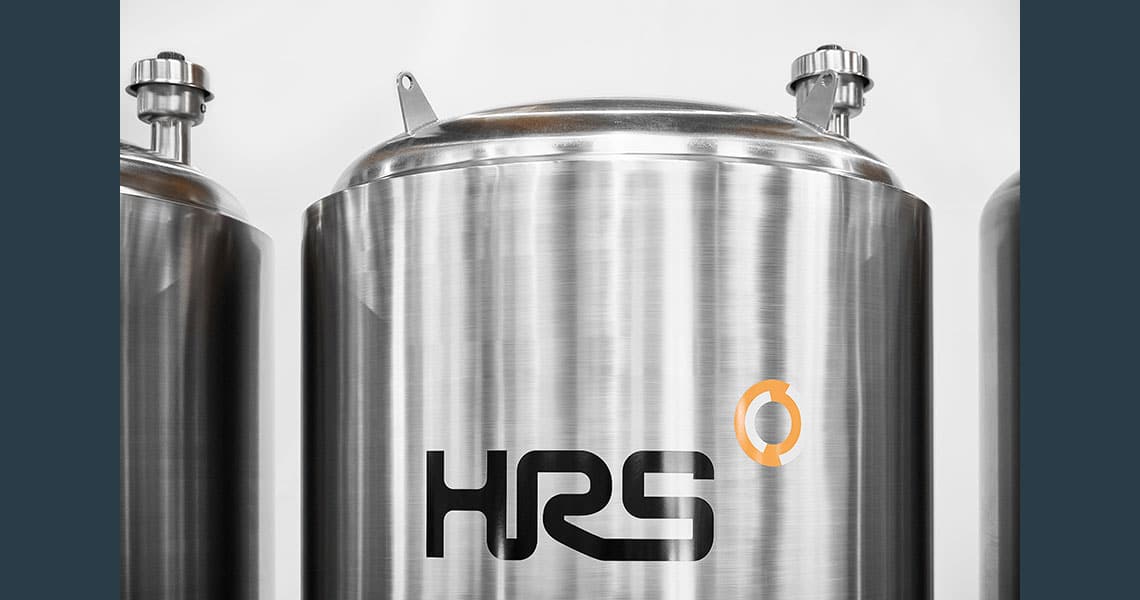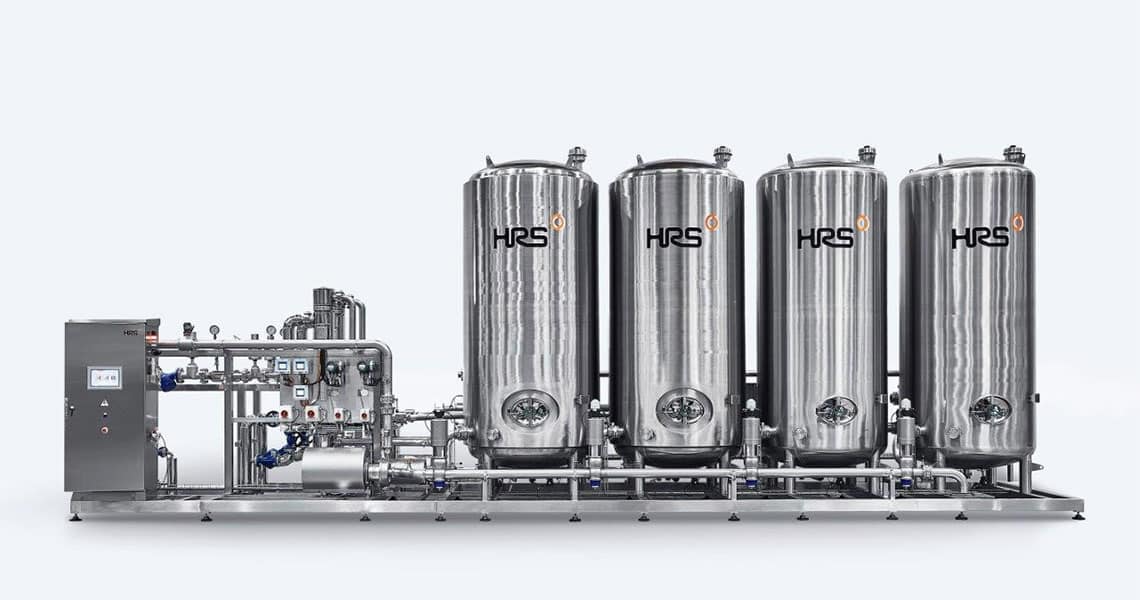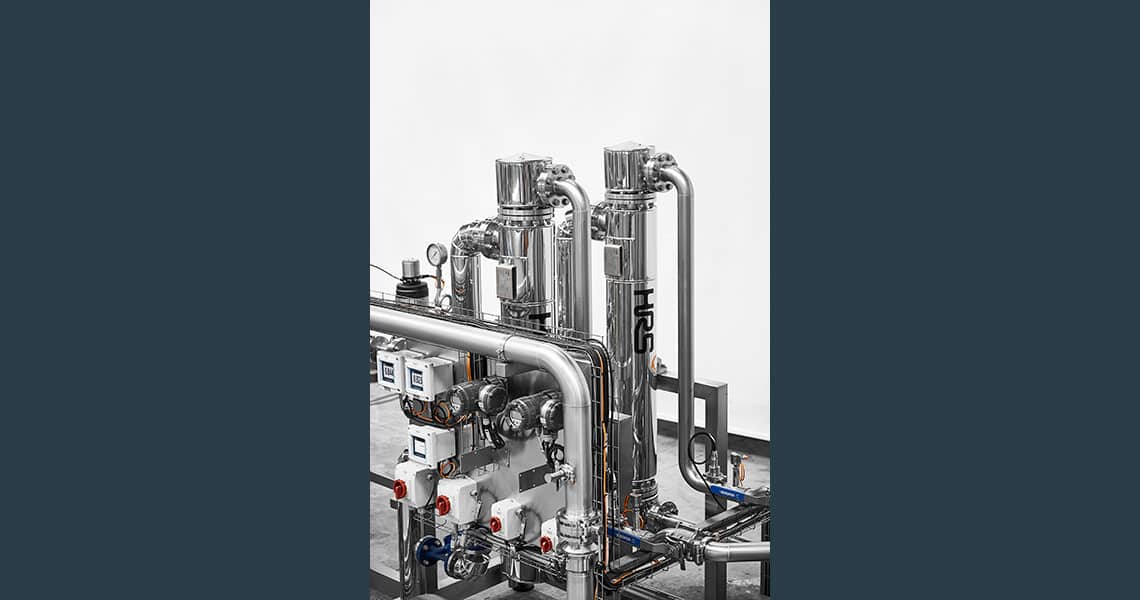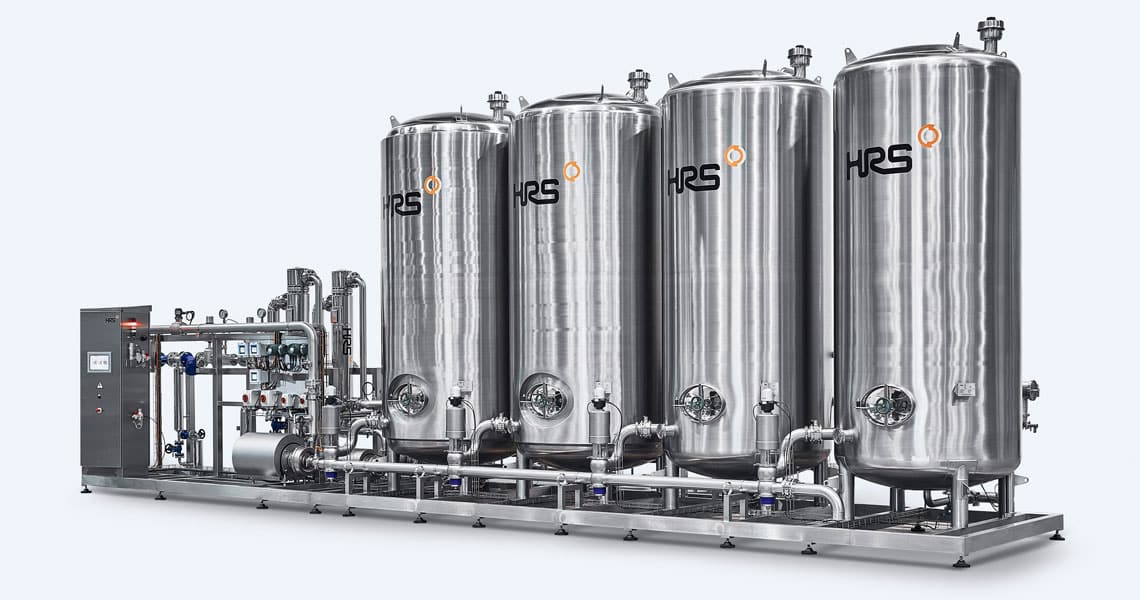Cleaning Systems (CIP & SIP)
The production of safe food and drink products is of paramount importance to producers and maintaining hygienic – in some cases sterile – production environments and equipment is a key requirement for modern food processing machinery. Apart from the simplest systems, most equipment today, particularly that which contains pipework, enclosed spaces and small apertures, is cleaned in situ without the need for dismantling or opening, and with minimal operator intervention – a technique which is known as Cleaning-in-Place (CIP).
HRS Heat Exchangers offers cleaning in place (CIP) and sterilisation in place (SIP) systems for cleaning and disinfection of food industry systems. Our CIP and SIP systems are supplied with a control system included, enabling automated cleaning cycles.
BENEFITS OF HRS CIP:
The main purpose of CIP is to remove physical dirt and residues, as well as bacteria. It is commonly used for equipment such as piping, tanks, and fillers, and CIP employs turbulent flow or spraying.
Benefits of HRS Cleaning-In-Place System:
- Ensure health and safety of the consumers
- Remove physical dirt, residues as well as bacteria
- Extend food product shelf life
- Ensure no cleaning fluids or contaminants remain in the equipment
- Ensuring food safety
- Reduce the number of system downtime
- Ensure product cycles are efficient and cost-effective
DESIGN CONSIDERATION
For CIP to be effective, not only does the CIP system itself need to be well designed, but the production equipment itself needs to be designed from the beginning with CIP in mind.
Because of the specialised and custom nature of food and drink processing machinery, some CIP systems are designed specifically for a particular system or piece of equipment, although with careful design it is common to install a dedicated CIP system, such as those available from HRS.
- Considerations for the equipment itself include areas such as surface roughness, clean welding and the prevention of inaccessible areas or corners where dirt and/or cleaning chemicals may build up.
- Reliability is also an important consideration and CIP systems must be designed to work for as long as the working lifetime of the equipment being cleaned.
- It is also important to consider how user-friendly the control systems for the CIP are.
- Another key element of an effective system is monitoring and validation of the cleaning results for traceability and due diligence purposes, the design of HRS’s equipment allows this to be done effectively.
TYPICAL CIP PROCESSES
- Pre-rinsing – to remove large debris and residues
- Detergent cleaning – to remove attached dirt and soiling using a caustic detergent
- Rinsing – to remove detergent and dirt
- Optional acid cleaning – if required to remove scaling or alkaline residues
- Rinsing – to remove the acidic cleaning agent
- Disinfection – heat or chemical treatment to disinfect the equipment
- Final rinse – to remove all traces of chemicals and prevent contamination
HRS CIP SYSTEMS
The cleaning and sanitisation of a process plant is one of the most critical aspects of food processing to ensure the health and safety of the consumer. Proper cleaning is essential for the production of high quality food products especially those with extended shelf life.
HRS offers two types of CIP (and SIP) systems:
-
- 1.Integrated System:
The first are those which are integrated into systems, such as HRS pasteurisers and sterilisers, as well as our Asepticblock Series (including the AF Filler). - 2.Stand-Alone System:
The second is the HRS series of stand-alone CIP and SIP systems. These are available with single (ST) or multiple tanks (MT), which are heated with HRS K Series heat exchangers.
- 1.Integrated System:
Fully skid-mounted and modular designs enables quick and easy site installation, and fully automated systems are supplied with a programmable logic controller (PLC) system, which can operate independently, or integrated into the factory’s main control system.
Contact our team for your CIP requirements.
RELATED CASE STUDY
RELATED NEWS:
- Top Tips to Reduce Food Waste During Processing
- Energy Efficient Food Processing Solutions
- Food Safety Takes Priority In Design 1
- Food Safety Takes Priority In Design 2
- Reducing DOWNTIME with heat exchangers
- Considerations for effective cleaning-in-place (CIP) systems
